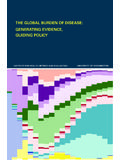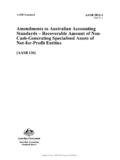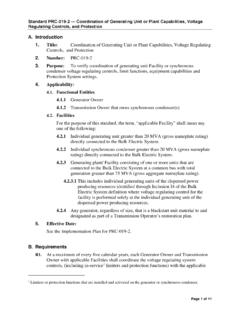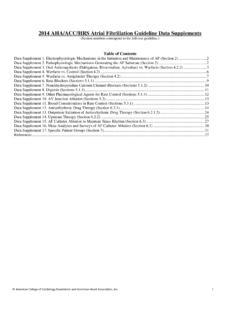Transcription of Preventing - WHO
1 Tel +41-22-791-2064. Fax +41-22-791-4489. Tel +41-22-791-4136. Fax +41-22-791-4171. Preventing intimate partner and sexual violence against women Taking action and generating evidence WHO Library Cataloguing-in-Publication Data: Preventing intimate partner and sexual violence against women: taking action and generating evidence / World Health Organization and London School of Hygiene and Tropical Medicine. abuse prevention and control. prevention and control. partners. assessment. women. offenses prevention and control.
2 Health Organization. ISBN 978 92 4 156400 7 (NLM classification: HV 6625). Suggested citation: World Health Organization/London School of Hygiene and Tropical Medicine. Preventing intimate partner and sexual violence against women: taking action and generating evidence . Geneva, World Health Organization, 2010. World Health Organization 2010. All rights reserved. Publications of the World Health Organization can be obtained from WHO Press, World Health Organization, 20 Avenue Appia, 1211 Geneva 27, Switzerland (tel.)
3 : +41 22 791 3264; fax: +41 22 791 4857; e-mail: Requests for permission to reproduce or translate WHO publications whether for sale or for noncommercial distribution should be addressed to WHO Press, at the above address (fax: +41 22 791 4806; e-mail: The designations employed and the presentation of the material in this publication do not imply the expression of any opinion whatsoever on the part of the World Health Organization concerning the legal status of any country, territory, city or area or of its authorities, or concerning the delimitation of its frontiers or boundaries.)
4 Dotted lines on maps represent approximate border lines for which there may not yet be full agreement. The mention of specific companies or of certain manufacturers' products does not imply that they are endorsed or recom- mended by the World Health Organization in preference to others of a similar nature that are not mentioned. Errors and omissions excepted, the names of proprietary products are distinguished by initial capital letters. All reasonable precautions have been taken by the World Health Organization to verify the information contained in this publication.
5 However, the published material is being distributed without warranty of any kind, either expressed or implied. The responsibility for the interpretation and use of the material lies with the reader. In no event shall the World Health Organization be liable for damages arising from its use. The named authors alone are responsible for the views expressed in this publication. Designed by minimum graphics. Printed in Belgium iii Contents Acknowledgements v Executive summary 1. Foreword 3. Introduction 5. The hidden costs of intimate partner and sexual violence 5.
6 A public health approach to prevention 6. A life-course perspective 8. What is the purpose of this document? 8. Who should use this document? 9. Key messages 10. Chapter 1 The nature, magnitude and consequences of intimate partner and sexual violence 11. What are intimate partner and sexual violence? 11. How prevalent are intimate partner and sexual violence? 12. What are the consequences of intimate partner and sexual violence? 15. Key messages 17. Chapter 2 Risk and protective factors for intimate partner and sexual violence 18.
7 The ecological model of violence 18. Identifying risk factors 19. Risk factors associated with both intimate partner violence and sexual violence 20. Risk factors associated with intimate partner violence 26. Risk factors associated with sexual violence 29. Protective factors for intimate partner violence and sexual violence 31. Gender norms and inequality 31. Key messages 32. iv Preventing intimate Partner and sexual violence against women Chapter 3 Primary prevention strategies the evidence base 34. Introduction 34.
8 Assessing the evidence for different prevention approaches 36. Summary tables of primary prevention strategies and programmes 38. During infancy, childhood and early adolescence 41. During adolescence and early adulthood 44. During adulthood 47. All life stages 51. Key messages 57. Chapter 4 Improving programme planning and evaluation 58. Step 1: Getting started 58. Step 2: Define and describe the nature of the problem 62. Step 3: Identify potentially effective programmes 66. Step 4: Develop policies and strategies 67.
9 Step 5: Create an action plan to ensure delivery 68. Step 6: Evaluate and share learning 70. Key messages 75. Future research priorities and conclusions 76. Future research priorities 76. Conclusions 77. References 79. Annexes Annex A: Operational definitions 91. Annex B: Prevention activities that can be used for process evaluation and potential sources of information on such activities 94. v Acknowledgements This document was written by Alexander Butchart, Claudia Garcia-Moreno, and Chris- topher Mikton of the World Health Organization, and builds on an early draft produced by Joanna Nurse of the London School of Hygiene and Tropical Medicine and the United Kingdom Department of Health, and Damian Basher of the United Kingdom Department of Health.
10 Natalia Diaz-Granados of McMaster University drafted Chap- ter 2: Risk and protective factors for intimate partner and sexual violence, while Joanne Klevens and Linda Anne Valle of the United States Centers for Disease Control and Prevention contributed to Chapter 4: Improving programme planning and evaluation. The document was edited by Tony Waddell. The document has also benefited greatly from comments and suggestions provided by the following peer reviewers: Linda Dahlberg, Kathryn Graham, Rachel Jewkes, Holly Johnson, Julia Kim, Karen Lang, Charlotte Watts and Alys Willman.
















